I am going to bend the oak sides as though I were going to use them in an instrument. They are not usable for that because of the surface defects, but I have never done this before so I want to go through the entire process before I tackle it on my good Mesquite.
So I went to the BBHIS...
Note
That is the "Big Box Home Improvement Store".
I'm not going to keep explaining that, so pay attention.
... and procured a length of MDF. That is Medium Density Fiberboard. It is basically cardboard glued into a plank using a resin. The plank is 8" (actually 7 1/2") by 8 feet long because that is the length I could find.
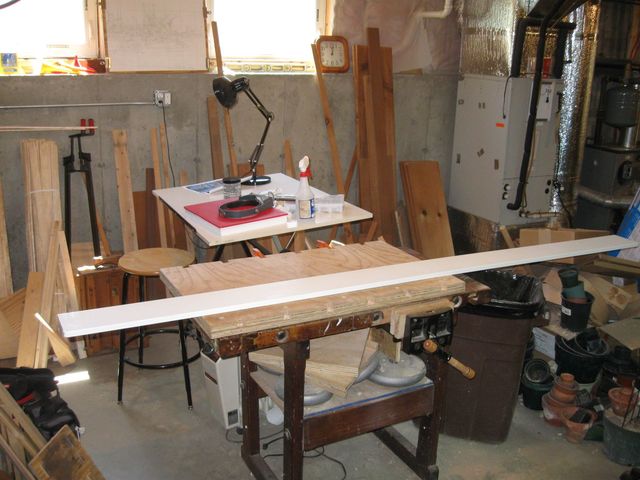
The MDF Plank
I decided to use MDF for my bentside template because it is cheap and stable. It is useful for that sort of thing, but other than that it is crap.
The MDF is tan in color, but the board shown in the photo is white. That is because it has been primed on one side for painting.
The easiest way to transfer the shape of the sides is by tracing the sides of my other dulcimer. I really like that shape, so I don't see any need to modify it. I put the dulcimer down on the MDF plank to see how it fits re. the length.
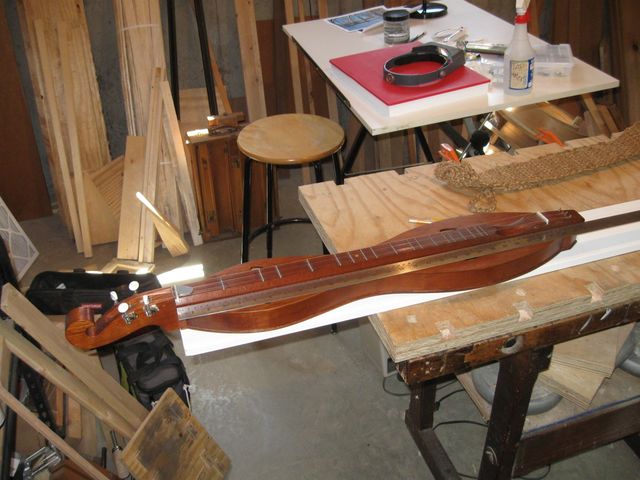
That Really is a Beautiful Instrument
I got out the rule to make sure I have the numbers right.
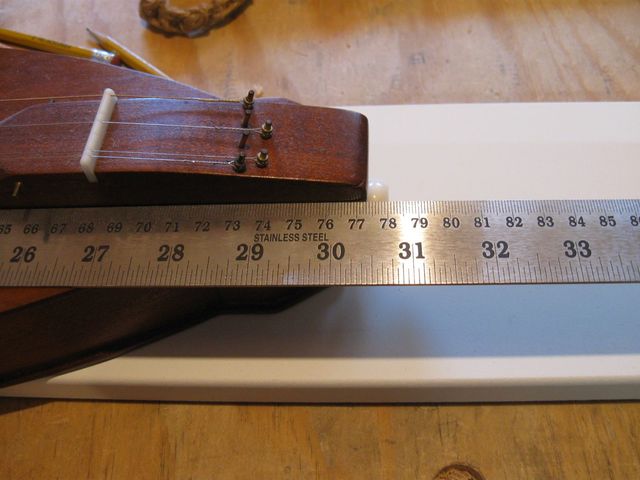
It is Just Over 30 Inches Long
I decided to cut off a length of MDF that is 36" long to make sure I have enough room and to provide some space for clamping the form to the bench if I need to. So I measured 36" and struck a line across the board.
Then, I got out my battery powered circular saw to cut it. I normally do not use these power tools because I hate the noise and the danger to my fingers and the sawdust and all. I am using this power saw because I do not want to dull my good woodworking tools cutting this junk.
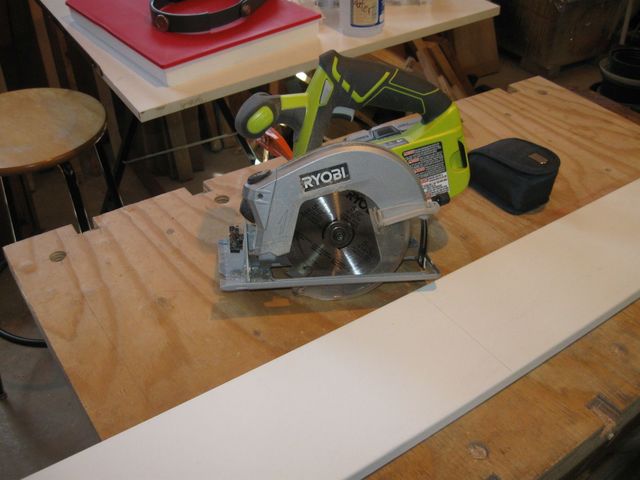
Scary, Finger Amputator Saw
Here is another issue. This MDF stuff is made from some sort of resin that is probably not good to breathe. Breathing in wood sawdust is bad enough, but breathing in Urea-formaldehyde or whatever is used in the MDF would be not good. So, I put on my Full Battle Gear PPE.
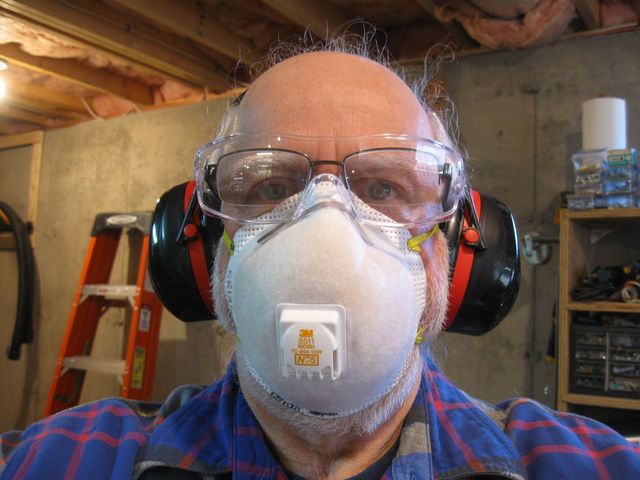
Personal Protective Equipment
- Hearing Protection - for the screeching, screaming, amputating saw blade.
- Eye Protection - for chipped carbide blade parts and ballistic plastic pieces.
- Dust Mask - for Urea-formaldehyde death-dealing fumes and particles.
Crap. Wish I had a hard hat for the photo.
Anyway. I'm all set. So I cut the board off at the line.
But then, Murphy struck. I put the board down on the bench and it looked too short. So I measured it.
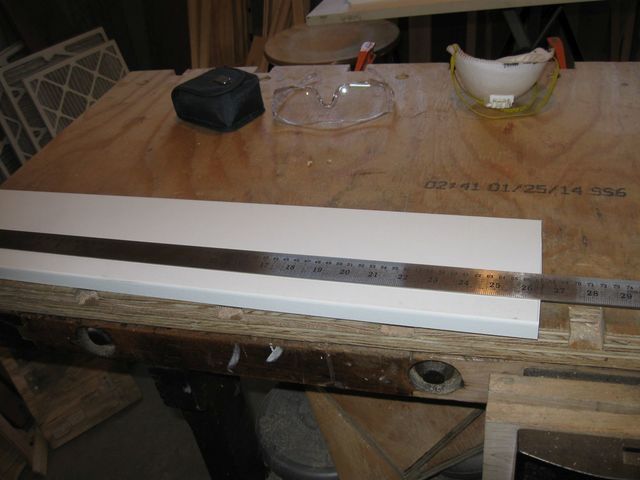
What the Heck?
Look at that! The board is only 26" long.
Wait. You can't see that. Here's a closeup.
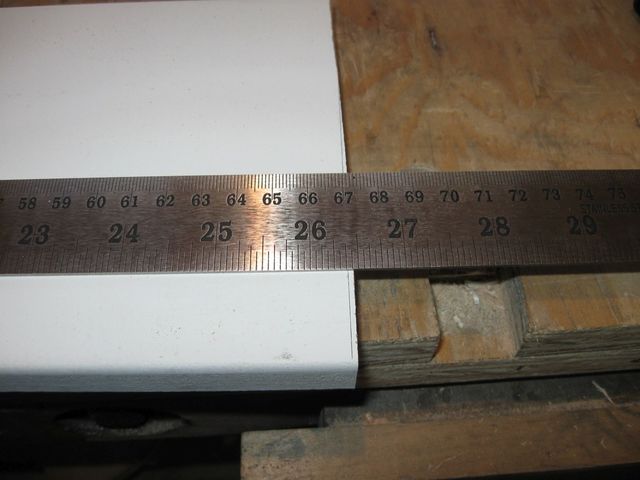
Actually 26 3/8" Long
Would someone explain to me what just happened? I remember measuring 36" on that board. So OK if it had turned out to be 26" exactly, maybe I misread a number in the 10's place. But 26 3/8"? What is that? Where did that come from?
I forgot that old rule. "Measure Twice and Cut Once". I have plenty of MDF left, and I won't be using it for anything else, so I just have to cut off another piece.
I got out the rule again and measured 36" (again). Here it is. You are my witness.
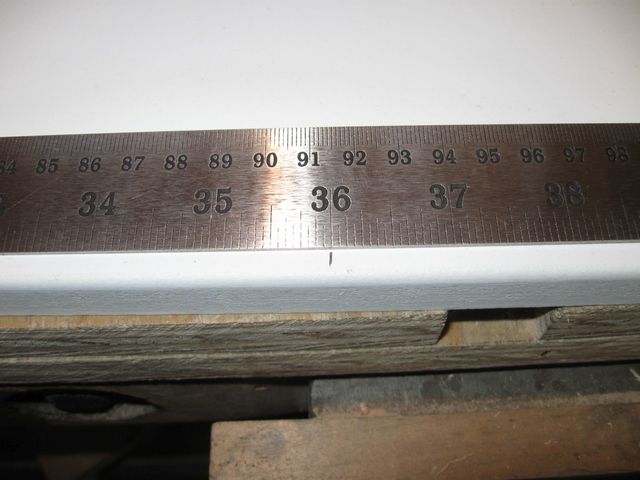
It Really Does Show 36"
Just to be sure, I put the dulcimer down on the board before I cut it.
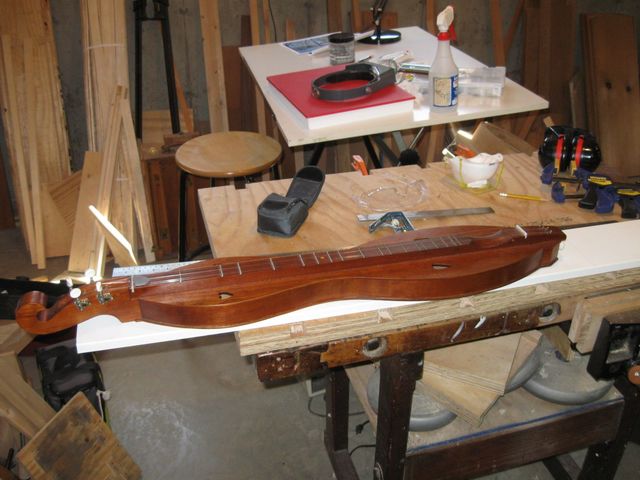
Making Sure This One is Long Enough
Checking the tail end.
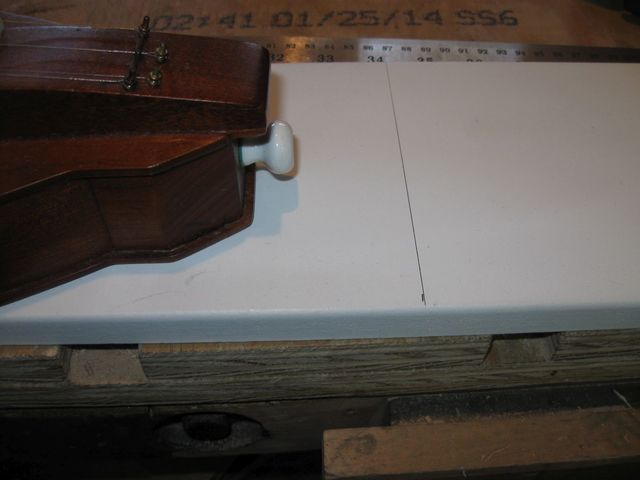
The Line is Past the End
So I suited up and cut the board on the line. Then, I measured it again.
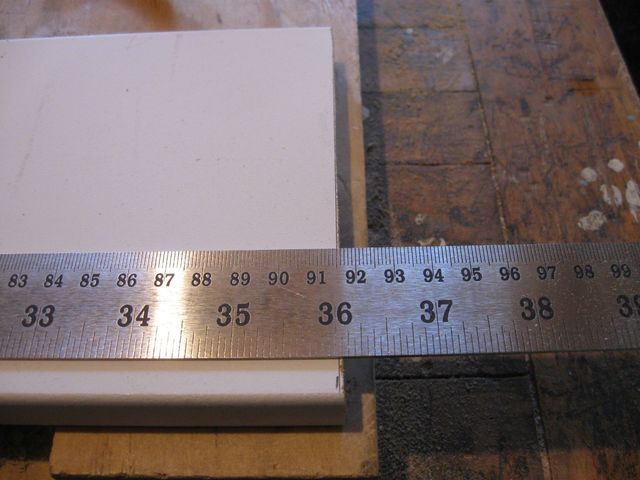
Yes. It Measures 36" This Time
I centered the instrument on the edge of the MDF board, balanced on a piece of scrap (next to the piece of crap).
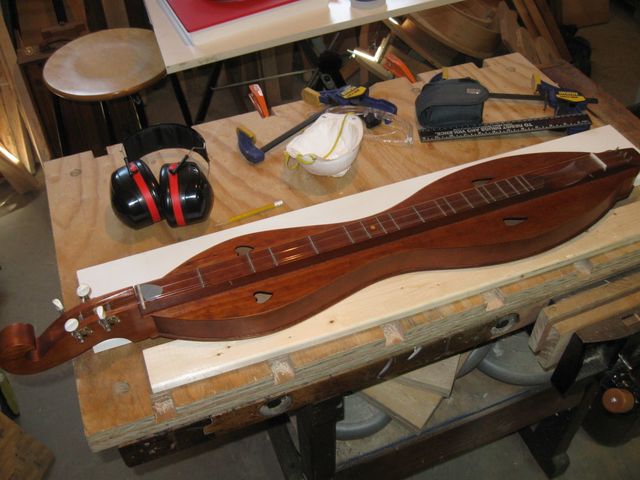
The Edge of the MDF is Centered on the Dulcimer
Then I traced it.
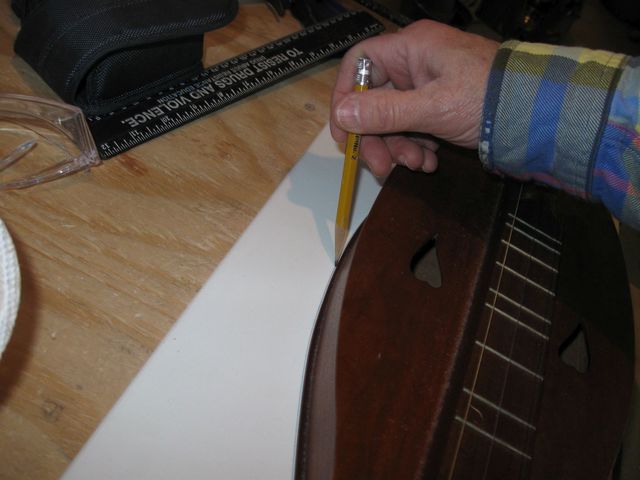
Tracing the Outline of the Dulcimer
There it is. The outline of the dulcimer side.
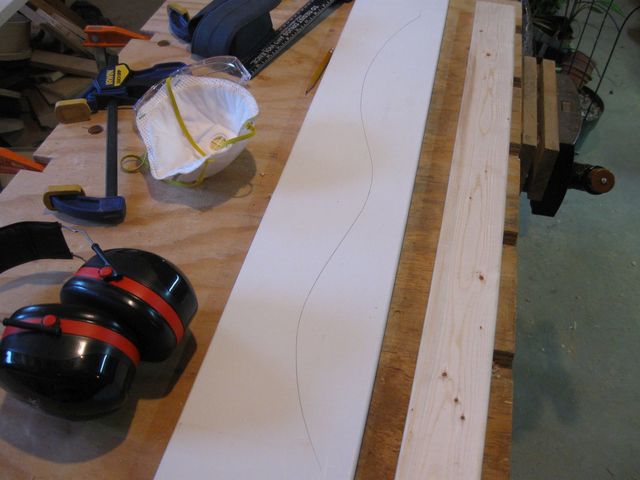
That is the Shape of the Side
I just need to cut along the line to make my template. To do that, I got out another of my power tools, my jigsaw. This should make quick work of the MDF and allow me to follow the line closely.
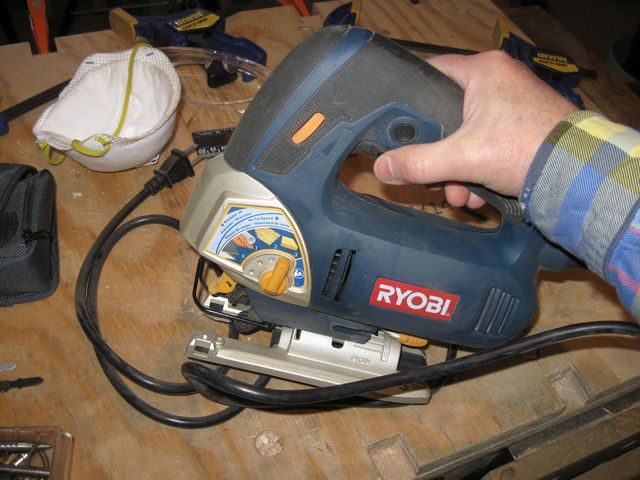
This is a Nice Jigsaw
I was not sure what kind of blade to use on the MDF, so I pulled out a couple of blades to try.
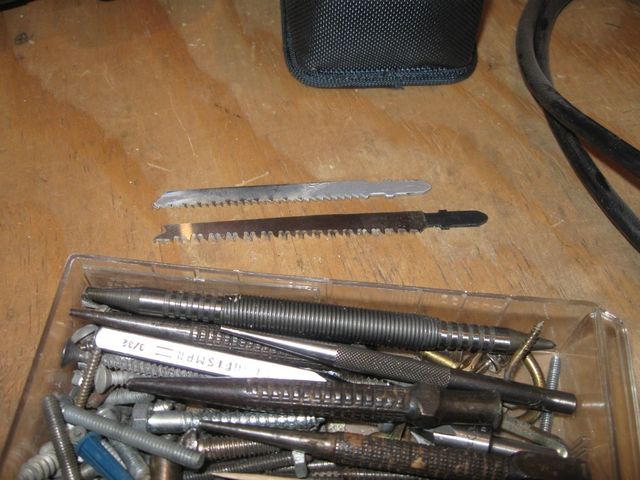
One of These
Once again, I am using a loud, dangerous power tool with a naked blade screaming beneath the material. So I suited up and cut the piece. I did not try to take any photos of that because I did not want to be distracted from keeping my fingers away from the blade. So here is the result of cutting along the line.
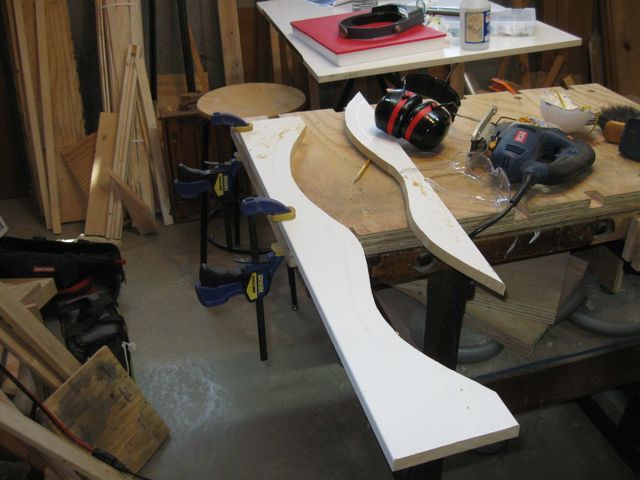
The Template for the Sides
I know that isn't very educational about how to cut a bending template using a jigsaw, but honestly I don't use it enough to be convinced that I would be a good teacher anyway. You will have to figure out the jigsaw on your own.
I cleaned up the edge a bit using the shoe rasp.
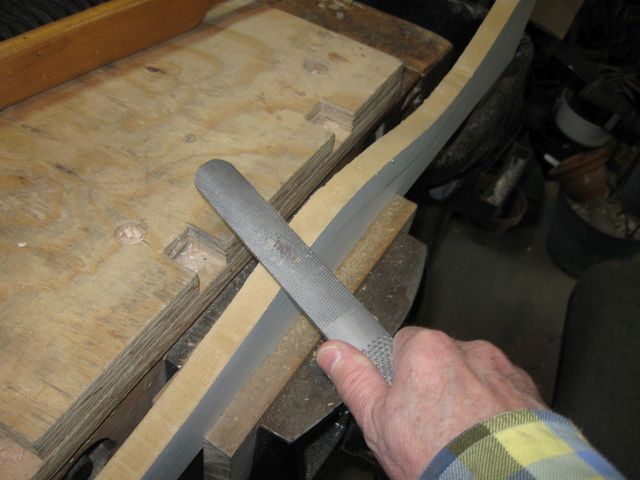
Removing the Saw Scars
What was coming off of the MDF as I filed it was like cardboard fluff. It wasn't like sawdust, but more like puffy fluff that you would get if you filed corrugated cardboard. This is very weak material. I wouldn't build anything important out of it.
To make sure I will be able to orient a side properly along the template, I marked each end of the form with the end of the instrument it represents.
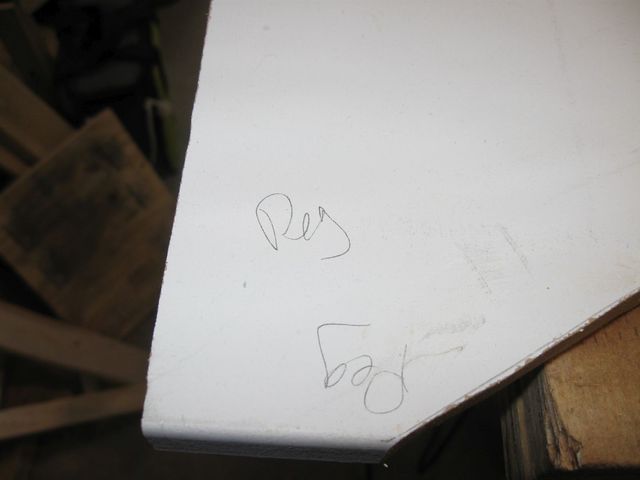
The Peg End
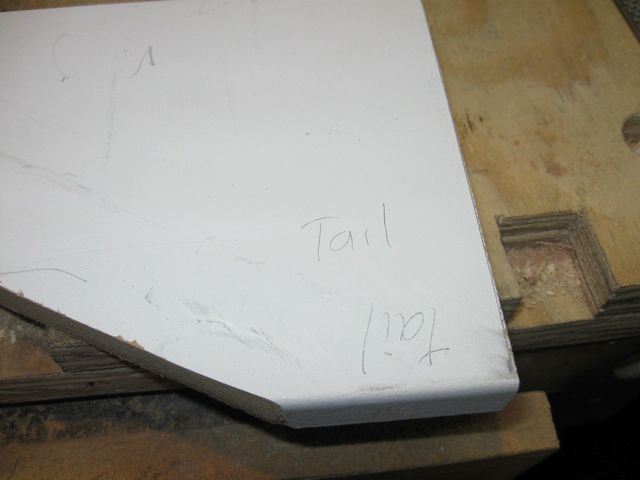
The Tail End
In case you are interested in what blade I used to cut the MDF, here it is. The teeth on the other one were too fine.
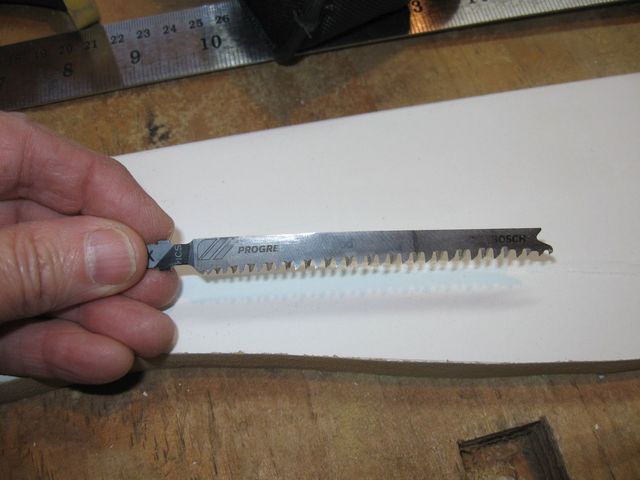
This is The Blade I Used
A closeup for the part number.
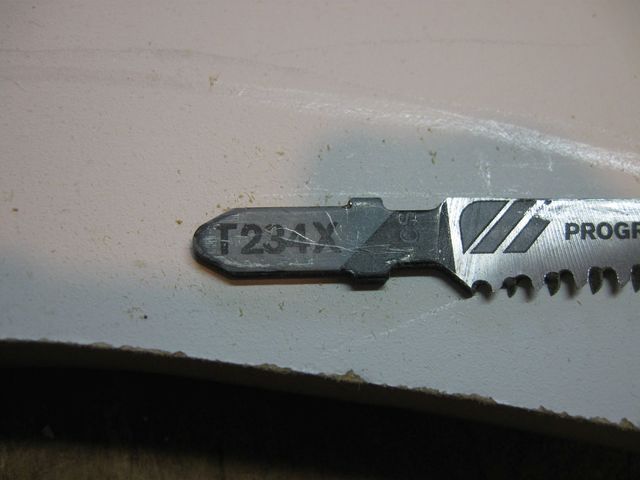
Here is the Blade Part Number
Now that I have the template, I can go ahead and see if I can bend the oak to match that shape. Next time.
